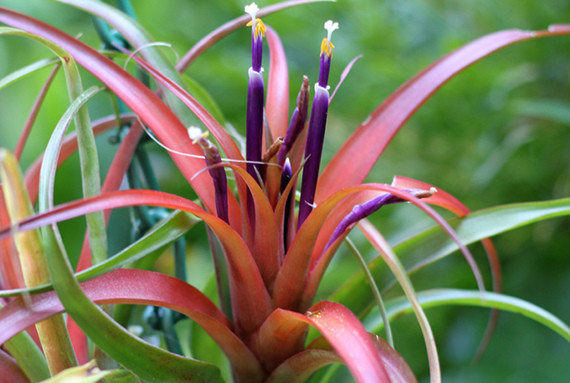
Image by Amanda Click/TheDigitel
Last week I posted an introductory piece on the vertical gardening movement that's taking place in the Lowcountry and now, as promised, I've got more video tutorials and tips for creating one of your very own.
To get things started, let's head back to to the personal garden of Jim Martin, executive director of the Charleston Parks Conservancy and avid blogger. In addition to wall units that transform vertical planes into living works of art, Jim also took the time to show me his vertical herb and vegetable garden that utilizes Woolly Pockets as well as his "green" take on the rain chain.
Woolly what? If you aren't familiar with Woolly Pockets, they are flexible, breathable, and modular gardening containers. Woolly Pockets are designed to be hung on walls for vertical gardening in both indoor and outdoor settings. According to the product's official website,"You can use Woolly Pockets both indoors and out; they have built-in moisture barriers to help protect furniture, and they're equally at home outside in the elements. They're perfect for creating urban gardens where you have space to garden but no land to garden in. Woolly Pockets are lightweight and can be folded flat, which makes them very easy to use, move, and store just about anywhere."
The first video below captures Jim using Woolly Pockets to create an outdoor vertical vegetable and herb garden.
Next, Jim pointed out his homemade variation on the rain chain. Your typical rain chain is simply an alternative to a downspout. Seen primarily on the west coast and in Japan, rain chains are decorative water features that transport rainwater from gutters downward to a drain or storage container below.
In Jim's version of the rain chain, he took Bromeliads, wrapped moss around their bases and then attached them, one atop another to a hanging chain. Whenever it rains, the Bromeliads' cups catch the rainwater exiting the gutters and live happy, healthy lives in a growing situation that is ideal for their species.
Take a look at the second video below of Jim showing off his homemade living rain chain.
Hopefully this second installment to the vertical gardening series was helpful. Don't forget, if you're seeking additional information on the subject or simply a crash course in horticulture, check in with the Charleston Horticultural Society. The Charleston Horticultural Society seeks to inspire excellence in Lowcountry horticulture and membership is open to all.
I'll have more on the subject including photos, growing tips and more very soon.
